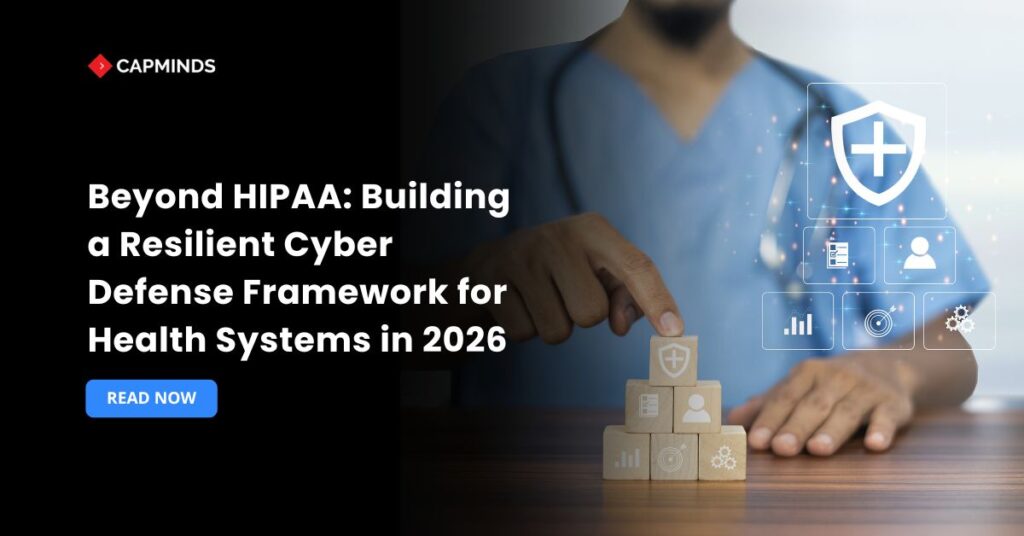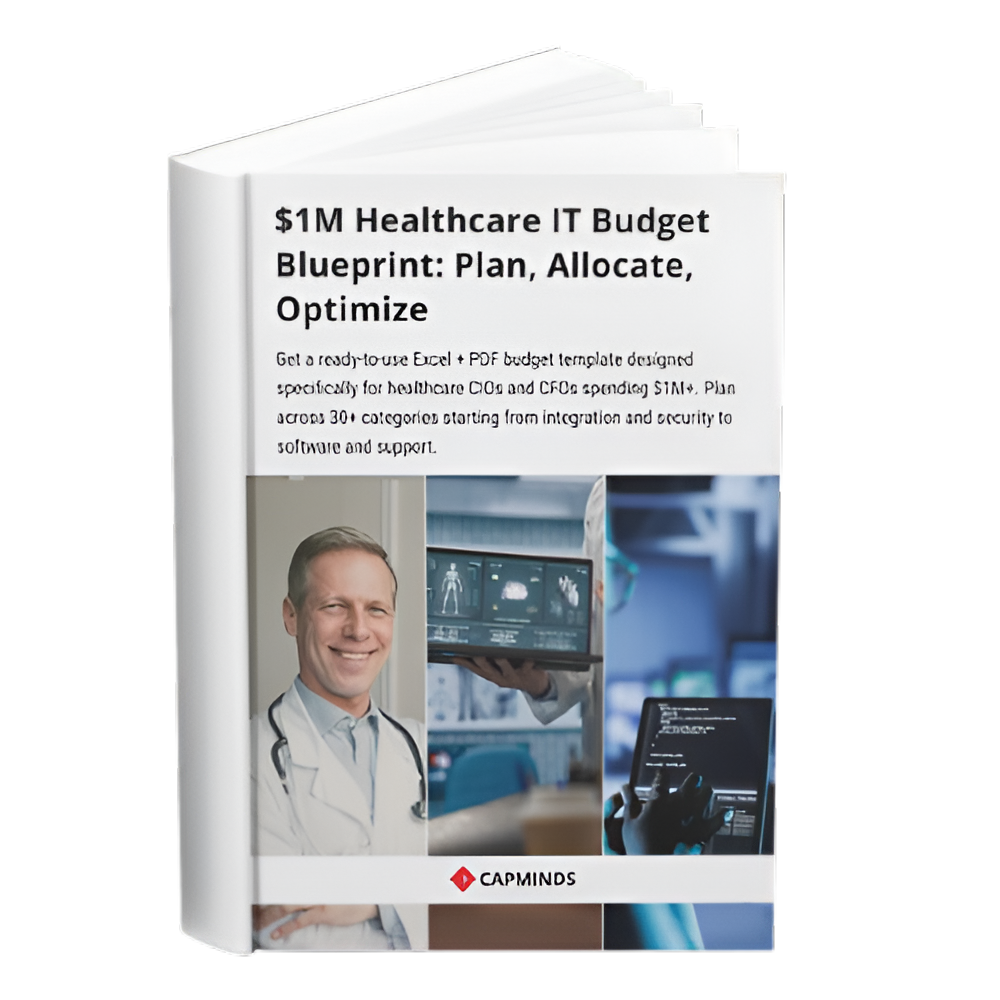Beyond HIPAA: Building a Resilient Cyber Defense Framework for Health Systems in 2026
The medical sector is under siege. Since disabling ransomware attacks that brought hospitals to a halt to massive data breaches with millions of patient records being affected, the threat has never been more dangerous.
The HIPAA compliance 2026 has remained the foundation of patient data security in the U.S. for decades, but now, with more advanced, automated, and financially incentivized cyber syndicates, compliance does not suffice to ensure patient safety and security.
The fundamental weakness of HIPAA is that even now, it is designed simply as a compliance program, not a technical, modern system of cybersecurity, but as an effort to achieve compliance with the minimal legal requirement.
Why HIPAA Alone Is No Longer Enough in 2026
The core limitation of HIPAA is its original design: it is a compliance framework, not a modern, technical cybersecurity architecture.
This does not imply that you are resistant to a well-planned, AI-based attack that aims at your supply chain or focuses on a zero-day vulnerability.
A successful audit only confirms you’ve met a minimum legal standard. It doesn’t mean you can withstand a coordinated, AI-driven attack that targets your supply chain or exploits a zero-day vulnerability.
The transition to telehealth, Electronic Health Records, and cloud security in healthcare systems has put such large volumes of PHI security best practices on the network, increasing their attention as targets.
An outward-facing defense, which is implied by HIPAA, is immediately outdated. Modern security is about cyber resilience in hospitals, i.e., the capability to not only prevent, but also detect, respond, and recover from a successful breach with minimum downtime to patient care.
The Threat Landscape in Healthcare 2026
Ransomware Automation and Double-Extortion
Healthcare ransomware prevention of the present era is complicated by attacks that not only encrypt the system and block operations but also steal data to release it on public forums (double-extortion) to guarantee the most effectiveness against the victim organization.
AI-Driven Cyberattacks
Attackers are utilizing AI to automate reconnaissance, create highly authentic phishing campaigns, and scan. APIs are frequently not well secured and can provide a brazen passage to data theft by hundreds of health systems at once.
Supply-Chain Attacks
Once a particular IT vendor, supplier of medical devices, or cloud service provider is attacked, hundreds of health systems could be breached at once.
Related: HIPAA Compliance: 5 Rules You Need to Know
Pillars of a Modern Cyber Defense Infrastructure
1. Zero-Trust Security Architecture
Identity-Centric Access: There should be validation and authentication of all users, devices, and applications trying to access resources, whether these are within their geographical area or not.
Network Segmentation: EHR databases, PACS systems, and other interconnected medical devices (IoMT) should be segregated into micro-segments. In case an attacker compromises a desktop in the finance department, they cannot simply transfer to the patient-monitoring systems of the intensive care unit in the same way they have been granted permission to do this.
Least-Privilege Enforcement: Only the minimum permissions are granted to users to do their job functions. This is an important component of PHI security best practices.
2. Advanced Encryption & Data Obfuscation
End-to-End Data Encryption: PHI should be strongly encrypted not only in databases and storage but also during transmission via telehealth or API calls.
Tokenization of PHI: Replacing sensitive data like patient IDs or Social Security Numbers with non-sensitive substitutes (tokens) for use in testing, development, and non-clinical applications.
3. Real-Time Threat Detection & MDR/XDR
Constant Surveillance – Dynamic surveillance of 24/7/365 monitoring is implemented, which is usually outsourced to Managed Detection and Response (MDR) or eXtended Detection and Response (XDR) service.
Behavioral Analytics – Processing user and entity behavior (UEBA) with the use of AI/ML to detect abnormalities, e.g., a billing specialist accesses cardiology records without authorization, is a threat.
4. Secure API & Integration Management
API Gateways: FHIR-based and HL7-based systems that pass their application traffic through a centrally controlled API gateway, which implements authentication, authorization, and rate limiting to eliminate exploitation.
5. Cloud-Native Security Controls
Cloud Posture Management – The automated tools are implemented to continuously scan the public cloud environment (AWS, Azure, Google Cloud) to ensure that it is set up properly and that it complies with the shared responsibility model, where the healthcare organization always has control over its data and user access controls.
6. Business Continuity & Disaster Recovery (BCDR)
Creating duplicate copies of key systems and PHI that are resistant to ransomware via the development of impervious and air-gapped copies that can never be altered, erased, or encrypted by a computer virus. This is the final resort to operational shutdown.
Paperwork, tested processes of switching to back-up systems to save clinical downtime in case of a successful breach prevention of a healthcare attack.
Developing Cyber Resilience: A Framework Hospitals Can Adopt
A. Governance & Risk-Based Approach
- Developing a map of all systems, data flows, and users with access to PHI.
- A risk assessment of potential loss of life and operational impact, rather than financial fines, should be done annually and in a comprehensive manner.
B. Digital Health Systems Digital Security-by-Design
- Integrating protection in new applications, API, and digital health platform development. This will be much cheaper than repairing at a later stage.
- Implementing the use of safe codes to reduce API weaknesses.
C. Third-Party & Vendor Risk Management
The healthcare organization should require its business partners to provide a transparent security scorecard and ongoing security attestation, such as SOC2 in the healthcare industry, and an explicit contractual SLA regarding PHI.
CapMinds Healthcare Cybersecurity & Compliance Services
With cyber threats growing faster, healthcare organizations require more than regulatory checkboxes; they should have a security partner who can protect PHI, modernize infrastructure, and enhance operational resiliency.
CapMinds offers full-cycle Cybersecurity, HIPAA Compliance, and Health IT Consulting Solutions designed to meet the needs of contemporary healthcare settings.
We help you implement advanced defense frameworks, secure your digital ecosystem, and achieve continuous compliance across cloud, EHR, telehealth, and third-party systems.
Our Core Services Include:
- HIPAA Compliance & Security Gap Remediation
- Zero-Trust & Identity Access Management Implementation
- FHIR/HL7 API Security & Integration Hardening
- Cloud Security & Posture Management (AWS/Azure/GCP)
- Healthcare Cyber Risk Assessments & Governance
- End-to-End Health IT Consulting & Digital Transformation Services
CapMinds ensures your organization is not just compliant, but truly cyber resilient.
Book your complimentary consultation today and secure your healthcare system.



